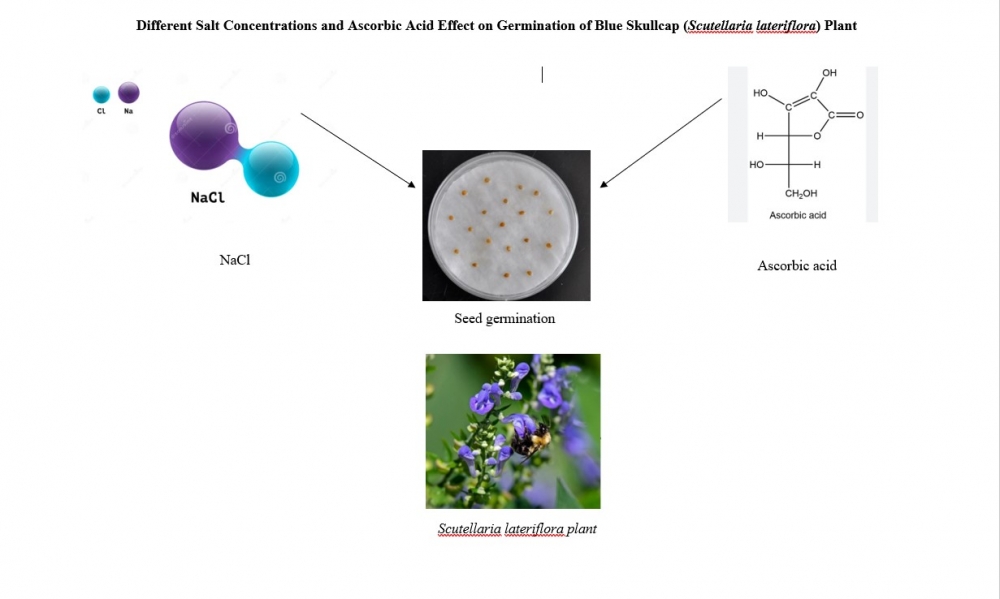JOURNAL 3111
Records of Agricultural and Food Chemistry
Year: 2024 Issue: 3 Special Issue: Abstracts 3rd. TCS, International Food Chemistry Congress February 29-March 03,2024 Antalya Türkiye
p.73 - 73
Viewed 895 times.
GRAPHICAL ABSTRACT

ABSTRACT
One of the most important stress factors affecting agricultural production in the world and in our country is soil salinity. This effect has constantly increased today, causing a decrease in efficiency and quality in many products. The main reason that triggers this situation is unconscious irrigation and evaporation [1]. Under salt stress, ascorbic acid plays an important role in growth regulation and plant metabolism, increasing the accessibility of water and nutrients [2]. Application of non-enzymatic antioxidant molecules such as ascorbic acid is considered an alternative way to reduce the negative effects of salt stress on plants [3]. In this research, it is aimed to determine the effect of ascorbic acid (AsA) application on germination and some physiological parameters of blue skullcap (Scutellaria lateriflora L.) seeds applied with different salt (NaCl) concentrations. This salts and AsA concentrations are taken as 0, 50, 100 and 150 mM. Analytical grade NaCl is used to create salt stress. Before germination, the seeds are subjected to surface sterilization in 5 % sodium hypochlorite solution for 10 minutes [4]. Surface sterilized seeds are kept in AsA solutions of different concentrations for priming for 12 hours [5] and then they are dried on drying papers at room conditions for 24 hours until they return to their previous moisture content. 20 seeds are placed in petri dishes containing double-layer filter paper and soak with 10 ml of solution from each of the different salt concentrations separately. In this research, germination rate (%), germination time (days), root length (cm) and stem length (cm) criteria are examined. As a result of this research, it is determined that increasing salt concentrations have a negative effect on germination. With the application of 100 mM AsA, the highest germination rate is found to be 91 %, germination time is 5.89 days, root length is 1.7 cm and stem length is 2.4 cm. It has been determined that AsA application at optimum level can have a positive effect on the germination of the blue skullcap plant in saline conditions.
KEYWORDS- Scutellaria lateriflora
- ascorbic acid (AsA)
- NaCl